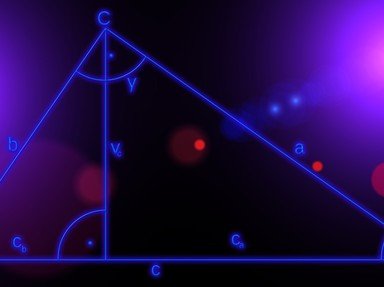Quiz Answer Key and Fun Facts
1. Mathematically, in terms of points (a) and (b), how could a straight line segment be defined?
2. An important aspect of the straight line is the equation that is derived for use in this particular area of geometry. This is especially so when plotted on to a straight line graph and the co-ordinates of various points on the line are available. What is the general formula commonly accepted in mathematical societies for a straight line?
3. By analysing the equation of a straight line which in this instance will be "y = 3x + 9", what would the gradient be?
4. From the following equation, what would be the value of the point at where the straight line crosses the y-axis of a graph: y = 4x - 3?
5. There is an arithmetic expression available which allows the gradient of a straight line to be found when two co-ordinates of points, for example, (x1/y1) and (x2/y2) are known. What is the described expression?
6. When a straight line is formed between points (x) and (y), there is always a midpoint. In this instance we will take the mid-point to be (z). What would be the equation used to discover the mid-point, (z)?
7. Straight lines are important in circle geometry and in particular, when trying to establish certain angles found within the circumference of the circle. What is the name of the straight line which touches the circumference of a circle at one point only?
8. The midpoint of a straight line isn't always found on the line itself.
9. An interesting part of straight line geometry is finding out the value of two separate lines when they meet at a certain angle. The phenomenon that I am referring to is when two straight lines meet at a 90 degree angle. What is the name given to two lines that meet at 90 degrees to each other?
10. If the gradient of one straight line is 5, the gradient of the straight line perpendicular to it will be -1/5. If the equation states that gradient one (m1) is multiplied by gradient two (m2), what will be the outcome?
Source: Author
jonnowales
This quiz was reviewed by FunTrivia editor
crisw before going online.
Any errors found in FunTrivia content are routinely corrected through our feedback system.

